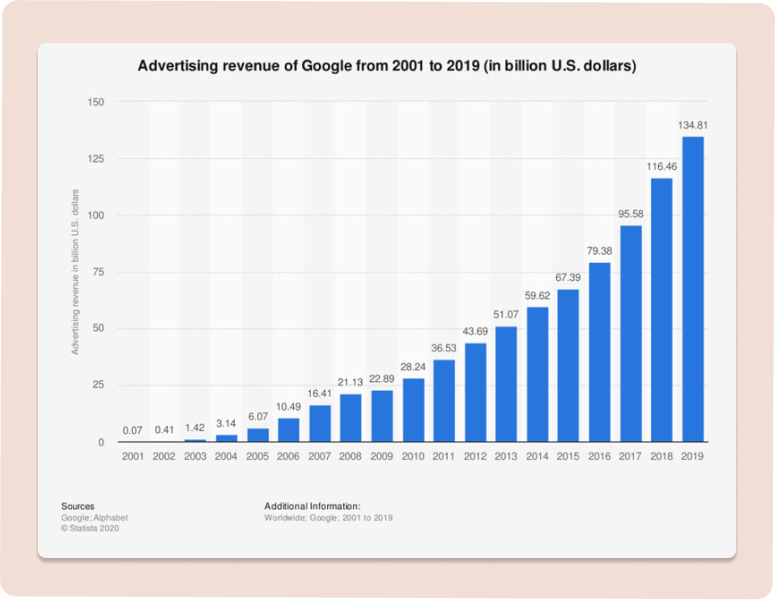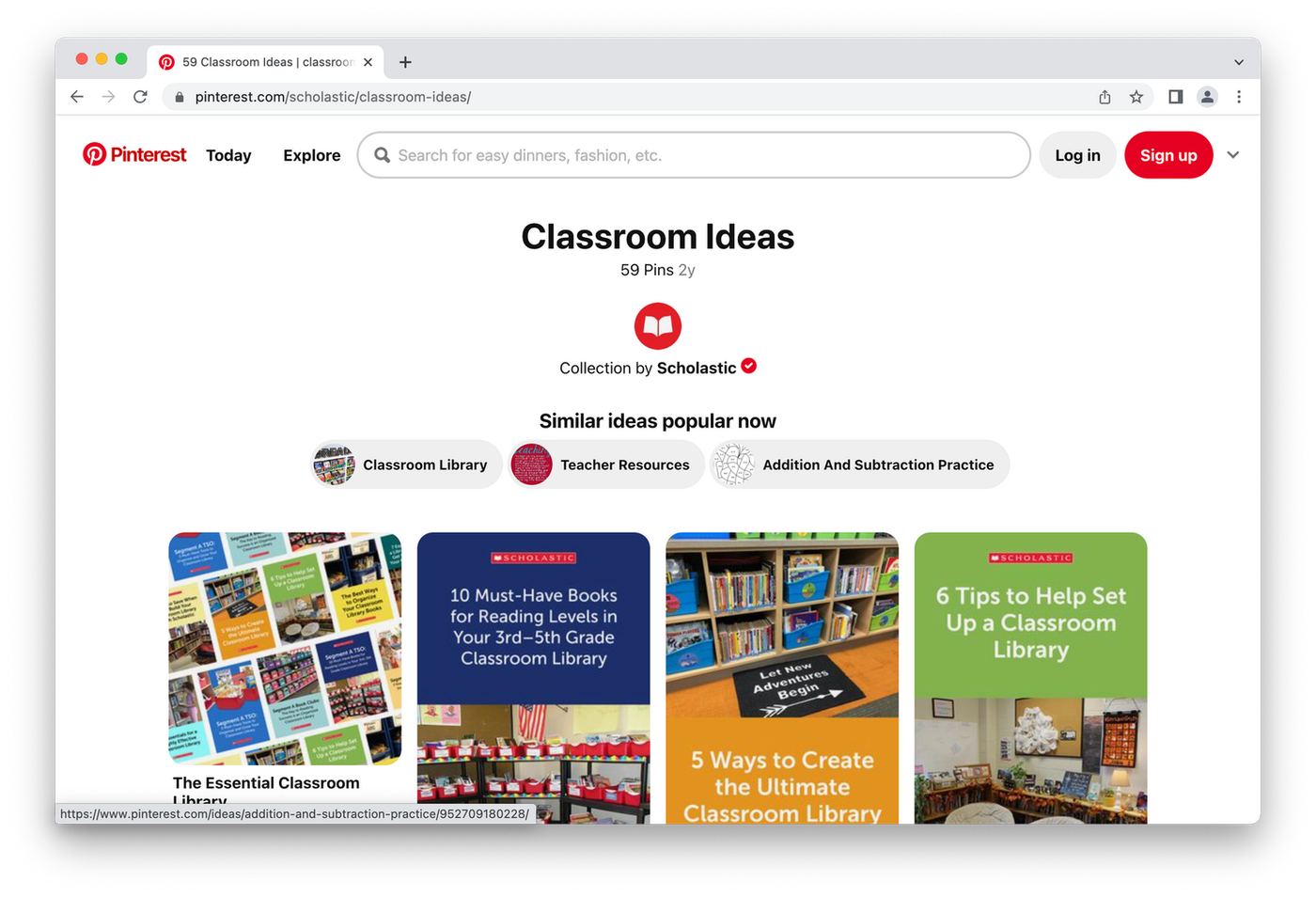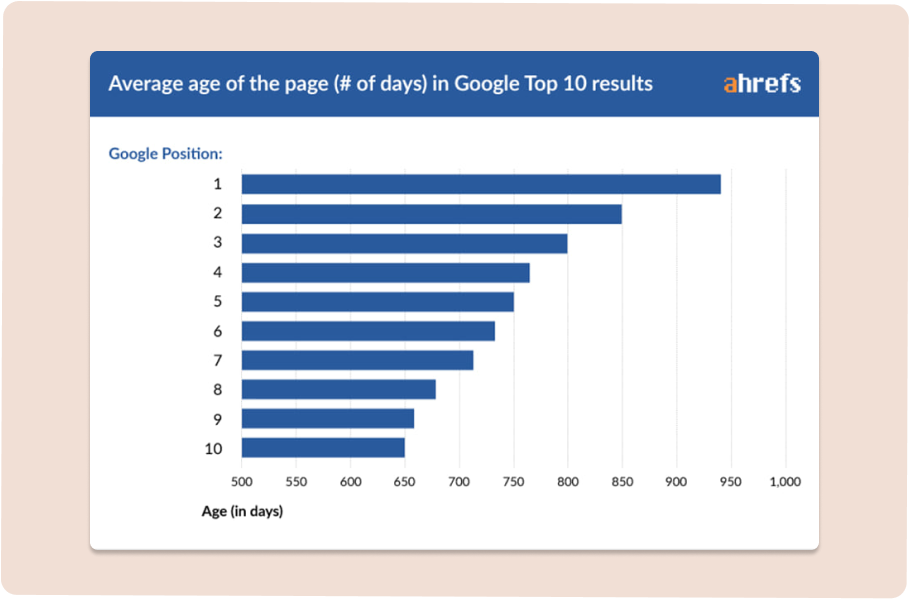
All Solutions

Explore all the solutions you can create with Paperform: surveys, quizzes, tests, payment forms, scheduling forms, and a whole lot more.
See all solutions











Connect with over 2,000 popular apps and software to improve productivity and automate workflows
See all integrationsProducts
Solutions
All Solutions

Explore all the solutions you can create with Paperform: surveys, quizzes, tests, payment forms, scheduling forms, and a whole lot more.
See all solutionsIntegrations

Connect with over 2,000 popular apps and software to improve productivity and automate workflows
See all integrationsResources
How to Leverage the Power of Indirect Marketing

The average consumer sees about 1,700 banner ads every single day and, unsurprisingly, ignores most of them. Ad fatigue is a real issue and can make direct marketing a challenge. So what are marketers to do?
The solution is indirect marketing, a form of promotion for your business or product that focuses not on making a quick sale, but on winning audience trust.
Indirect marketing has become a preferred advertising mode for businesses trying to cut through the noise of the millions of ads online. In this article, we'll look at several ways you can use an indirect marketing strategy to boost sales and brand awareness.
What is indirect marketing?
Indirect marketing is a way to engage with your customers, rather than sell directly to them, through various channels. It's a gentle nudge to get someone to see all the great things your brand has to offer.
Less intrusive and more informative, it gives you a chance to engage with your target audience authentically, without pushing for a sale.
Indirect marketers move away from fighting to close a sale and instead focus on providing value to the consumer. The trick is to plant a seed, nurture it by giving value and information-rich content, and then let the customer do the rest.
Content marketing, blogging, public relations (PR), social media, and search engine optimization (SEO) are some of the most popular indirect marketing techniques for businesses, and podcasts, webinars, and tutorials are some other popular indirect marketing campaigns.
Why does indirect marketing matter?
Across the various types of digital marketing brands use, consumers will see thousands of ads in a typical day. Google alone brought in advertising revenue that topped $134 billion in 2019 with PPC ads:
 (Image Source: PPC)
(Image Source: PPC)This constant flow of ads can be exhausting for consumers, and many of us have learned to tune them out. Many people even use tools like ad blockers to reduce the number they see. That's why indirect marketing is so important— it allows you to get eyes on your brand, without adding to the massive pile of blocked ads.
For example, let’s imagine you run a content marketing agency. A free webinar on how to use content marketing to grow your business will attract far more prospective customers than a promotional post or sales calls about your services.
There are two main reasons for this. First, your consumer is looking for value right from the first time they encounter your brand. They will not engage with you if they see that you are only looking to make a quick sale. Second, it is a great way to keep potential customers engaged as you guide them along the sales funnel, without coming across as pushy.
How to leverage the power of indirect marketing
Bombarding your customers with demands to "buy this product now!" is annoying, but it's also not a great business strategy. If you interrupt their web browsing or social media scrolling experience with a hard sell ad, chances are they will become annoyed and end up with nothing good to say about your brand.
Intrusive ads and direct mail can be countered by indirect marketing. This offers you three opportunities that direct marketing doesn’t:
- The opportunity to build trust
- The opportunity to develop customer loyalty
- An effective avenue for brand recognition
In this section, we will look at 7 ways you can use indirect marketing to ease your leads into the sales funnel and prevent them from leaking out.
1. Social media
Love it or hate it, social media is near-ubiquitous in the modern world. Social media is also a part of the digital ad overdose problem for many users. But that doesn’t mean you should eschew social media marketing entirely. You just need to be clever in how you approach it.
You can use social media to provide great content to your audience. Rather than yet another “buy now” ad, you can use Facebook groups, YouTube and TikTok videos, Instagram Stories, and more to share useful information, get to know your audience, and interact with them directly. Think of it as an indirect version of email marketing. Creative analytics tools can also help you refine your social media strategy, ensuring your content resonates with the right audience and drives meaningful engagement
Education website Scholastic shows us one example of a great way to do this. Their Pinterest account has separate boards aimed at various segments of their audience - teachers, students, and parents. Each one provides excellent tips.
 (Image Source: Pinterest)
(Image Source: Pinterest)They further break their content down, for example by offering separate boards for classroom learning and e-learning. In the example above, they offer tips on making the most of your classroom library. This immediately provides useful and relevant information for their target audience and enables conversation between the brand and its customers.
Designing social media posts is also faster (and generally requires less resources) than many other direct marketing channels such as direct mail, sales calls and PPC. Just remember - whatever you do with social media, always pay attention to your analytics to make sure things are working as you want them to.
2. Word of mouth marketing and referrals
Though we live in the digital age, word-of-mouth marketing is still incredibly powerful. Why? Because people trust recommendations from their friends, family, and colleagues more than they trust traditional advertising.
Take the time to build your network, get to know people and create brand loyalty. Online networking allows you to build authentic relationships, have conversations on topics related to your services, and gently nudge interested parties towards your brand.
Many of the people you meet will never have need of your services. That doesn’t mean the time was wasted! If they know and trust you and can vouch for your knowledge and professionalism, they’ll recommend you when someone in their network needs what you’re offering.
An easy way to encourage organic referrals is by offering interactive forms that make it simple for your customers to share your products and services with their friends and family.
fitness referral
Word of mouth advertising can’t be forced. It requires real connections as well as time and patience. But if you present yourself as a welcoming and professional face of your brand, you will soon find those in your network are willing to endorse you to their friends.
In the US, companies say that an average of 65% of new sales come from referrals. The reason is simple: the personal experience of a customer is always more effective than a brand’s claim of being the best, intrusive sales pitches and telemarketing.
The only way to take full advantage of this is to offer a superior product and amazing customer service. Remember, this works both ways. If your product and service are great, people will tell their friends.
If your product or customer service is terrible… well, they’ll also tell their friends. A strong referral system can make or break a small business.
3. Free content
Who doesn’t love free stuff? Free, valuable content is a surefire winner in indirect marketing. Content marketing utilizes a vast array of content types and formats, from articles to Youtube videos, blogs, and even starting a podcast.
Content can be informative, entertaining, or both, and is a great way to showcase your brand's value and purpose.
The best kind of content educates, entertains, and then piques the customer’s interest enough to inspire them to learn more. Here's an example from Hootsuite’s The Game of Thrones-inspired video.
This brilliant campaign replaced the various houses featured in the show’s title sequence with social media platforms. The video ended with the Hootsuite logo and the memorable tagline, “Unite your social kingdom!”. With more than 1 million views, this campaign capitalized on a pop culture phenomenon in a way that was highly entertaining.
Many brands also use long-form articles to educate their audience, providing in-depth analysis of a topic or a robust how-to guide. This type of informative content works brilliantly as it helps website visitors answer a specific question or solve a particular problem.
Here are a few other types of content you might like to try:
- Industry news and views
- Quizzes
- Visual content such as charts, graphs, and infographics
- Video testimonials
- Interviews with leading experts
Using content to drive leads and customers for your business is a lot simpler than it sounds. Don’t be afraid to vary your content, try things out, and see what resonates with your audience and gets the best response.
4. Free tools and trials
Ultimately, your marketing tactics have one purpose: to convince prospective customers of the value of your product or service. Therefore, why not give them a free look at what you can provide?
A free trial period of your product or service is a great way to show them that your product is the solution they’re looking for.
People are often risk-averse, particularly when it comes to spending money. They may not want to take a chance on something they haven’t tried. A free trial with no obligation takes away the risk factor. Make sure that your free trial is a salient selling point on your landing page.
free trial form
5. Social Responsibility
Modern consumers expect brands to give back and contribute positively to society. Buyers increasingly want to support brands that behave ethically, have sustainable practices, and demonstrate a social conscience.
Companies of all sizes have realized the power of using a social cause in their marketing efforts. By attaching yourself to a cause, you can gain your customers' trust as a dependable brand looking to make a positive impact in the world.
Environmental concerns have prompted a massive movement for more climate literacy in recent years, and companies are taking note. Household name brands like Google, Amazon, and Microsoft are all vowing to cut down their carbon footprint and operate in a more sustainable manner.
McDonald's Sweden created a great, eye-catching campaign to draw attention to the world’s most important pollinators: bees. They “opened” a mini McDonald’s for bees and cleverly titled it McHive:
 (Image Source: People)
(Image Source: People)Don’t be tempted to attach yourself to a cause you don’t care about just to win corporate social responsibility points. This will be very transparent to your audience. Instead, choose something that really matters to you - whether it’s environmental concerns, animal rights, eradicating poverty, or promoting equality for all - and make your brand a vocal advocate.
6. Search Engine Optimization
Good SEO practices should form the backbone of all your marketing efforts. From choosing the right keyword to ensuring all your images and H1 tags are optimized, SEO is essential if you want your brand to be more visible.
Where is the first place you go when you want to find something online? I bet it’s Google or another search engine. Well, so do most people. That’s why SEO matters—it helps people to find you where they’re looking for you.
Here are a few quick SEO tips to help you get started:
- Use a plugin like Keywords Everywhere to choose long-tail, high search volume keywords to use.
- Build quality backlinks by writing guest posts for sites in your niche with a high domain authority.
- Add alt tags to all images, allowing Google to crawl them and understand what they contain.
- Reduce your server response time and page load speed for a faster website.
There are special SEO considerations if you are a local business. One study indicated that 92% of local intent searchers choose companies that appear on the first page of results. It also has the best conversion rate among all channels as users come to your brand for immediate solutions.
Here are a few local SEO tips:
- Create and optimize your Google My Business page
- Create on-site content which targets local keywords
- Build backlinks on relevant local and regional sites
- Ensure your business address is 100% consistent everywhere it appears
SEO is a long game. Your site won’t start ranking in the first week or even the first month. One Ahrefs study found that pages ranking in the top spot of a Google results page are around three years old on average:
 (Image Source: Ahrefs)
(Image Source: Ahrefs)7. Public relations
The press can also be an effective way to get people to notice your business. Appearing in the right local publications can give your brand’s credibility a boost. Getting your brand to feature in newspapers and magazines also allows your customers to get to know you better.
PR campaigns help to generate a buzz around your brand and are particularly useful during product launches. As we discussed in the previous section, they’re good for SEO, too.
Companies often use PR campaigns to keep their brand in the public eye and stay relevant. Sportswear brand Nike created a PR sensation when it jumped into the body positivity movement and started displaying mannequins representing different body sizes.
The move was hailed on social media and was picked up by various publications, including Business Insider, which called it a “brilliant business decision”. According to the article, after the move, the search for the words “Nike” and “plus-size” grew by 387%.
Be careful, though - PR campaigns can backfire badly if you don’t know what you’re doing. Hire a professional PR consultant to create your press releases and ensure you don’t end up creating a PR disaster.
7. Influencer marketing
Influencer marketing is a bit like a referral program taken to the next level. When one trusted person tells another, you might add two people to your network. With an influencer, however, one recommendation can get your brand in front of thousands of potential customers.
A study by Medakix estimates that about 80% of marketers find influencers an “effective” or “very effective” form of marketing.
Influencers, who were once only celebrities and celebrated industry experts, now include the growing tribe of bloggers, vloggers, and social media personalities who have amassed a loyal following. And with platforms like Influencer Hero making it easier to discover and connect with these creators, brands can now find the right voices to represent them without all the manual legwork.
Over to you
Indirect marketing can be a highly effective way to build brand awareness and trust. Ranging from educational to entertaining, indirect strategies allow consumers to see the value your services can provide, without ad blockers or ad fatigue getting in the way.
You can use social media, public relations, blogging, referral programs, social causes, and many other strategies to further your brand’s reach. Just stay focused on providing value and demonstrating why your brand is unique.
This post was written by a guest author named Matt Diggity, a search engine optimisation expert focused on affiliate marketing, client ranking, lead generation, and SEO services. He is the founder and CEO of Diggity Marketing, The Search Initiative, Authority Builders, LeadSpring LLC, and host of the Chiang Mai SEO Conference.1.
Form a better life now.
Get your 7 day unrestricted trialHere is the ultimate list of online form builders, what they do best, their pricing, and examples to...
Independent retailers are some of the smartest operators in small business—but they’re forced to wor...
Independent retailers are some of the smartest operators in small business—but they’re forced to wor...
The ultimate list of Black Friday and Cyber Monday SaaS deals for 2025